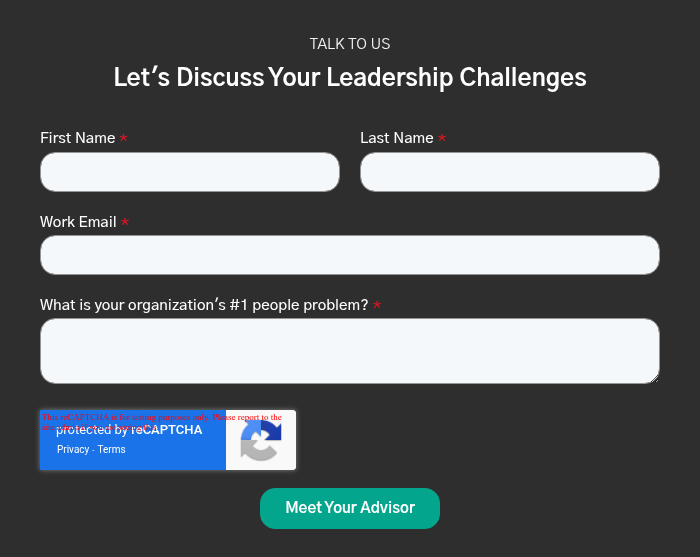The Whole Person Comes to Work: Why Empathetic Leadership Is Not Optional
October 31st, 2025
3 min read
By John Gave

Productivity had slipped. An employee known for her precision and consistency was making uncharacteristic errors. She missed a key deadline. She seemed distracted in meetings, less responsive to emails, and occasionally disengaged from the team. At first, her manager considered performance coaching. Something had shifted, but the source was unclear.
Only during a one-on-one conversation did the truth surface: her teenage daughter was battling severe emotional distress, including self-harm. The employee was overwhelmed. She had been carrying the weight of her child’s mental health crisis quietly, doing her best to maintain professionalism. The reality was, she couldn’t separate it anymore.
Situations like this are not rare, but leaders often miss them. Many expect personal matters to stay at home and professional focus to dominate the workplace. This expectation is not only unrealistic, it is counterproductive. Employees are not machines. They bring their whole selves to work—including their stress, fear, grief, and responsibilities. Failing to acknowledge that truth creates blind spots in leadership, erodes trust, and limits team performance.
The Metiss Group works with leadership teams across industries to help them build better hiring practices, apply emotional intelligence in the workplace, and lead with clarity and compassion. This experience affirms a simple truth: emotionally intelligent leadership drives performance. Recognizing the full context of an employee’s experience is not a soft skill. It is a leadership skill.
This article offers a strategic perspective on why recognizing the whole person is a leadership imperative. It highlights the value of regular one-on-one meetings, the role of emotional intelligence, and how empathetic leadership drives employee performance and loyalty.
In this article, you will learn:
Why The Whole Person Comes to Work
The Strategic Power of One-on-One Meetings
Why Emotional Intelligence Is a Core Leadership Competency
The Long-Term Impact of Supportive Leadership
Why The Whole Person Comes to Work
Employees do not leave their personal lives at the office door. Illness, grief, relationship struggles, parenting challenges, financial stress, and mental health concerns walk in with them. Leaders who attempt to compartmentalize employee experiences or expect others to do so lose sight of the human realities that shape performance.
In the story above, the employee’s errors were not rooted in capability but capacity. Her emotional bandwidth was depleted. Had her manager addressed performance without first understanding the context, it would have compounded the issue and risked disengagement—or worse, resignation.
When leaders acknowledge the full human experience of their team, they gain trust. More importantly, they are positioned to support—not just correct—performance. Compassionate leadership is not indulgent. It is strategic. It creates the conditions for employees to recover, recalibrate, and return to high performance.
The Strategic Power of One-on-One Meetings
The one-on-one meeting is not a formality. It is a critical leadership tool. While weekly team meetings focus on project updates, one-on-ones should focus on the person behind the role. These are moments to ask: “How are you doing?” and mean it.
When held regularly, one-on-one meetings build a foundation of psychological safety. Employees feel safe to raise concerns, share obstacles, and seek help. Leaders, in turn, gain visibility into the dynamics affecting their teams. They can identify performance risks early, make more informed decisions, and offer resources or flexibility where needed.
This does not mean managers must become therapists. It means they must listen well, respond appropriately, and take the whole person into account when managing performance. The goal is not to fix personal problems. The goal is to be aware of them, make reasonable accommodations when possible, and demonstrate humanity in leadership.

Why Emotional Intelligence Is a Core Leadership Competency
Emotional intelligence is the ability to recognize, understand, and manage one’s own emotions, while also recognizing, understanding, and taking the emotions of others in context. In leadership, it is not optional. It determines how leaders respond to stress, handle conflict, and support employees through difficulty.
In emotionally charged situations—such as the one involving an employee with a child in crisis—leaders must demonstrate emotional intelligence in real time. That includes pausing judgment, listening with empathy, and responding with care and clarity. It also includes discretion. Trust depends on it.
Organizations that invest in emotional intelligence training for managers often see measurable gains in team engagement, retention, and performance. This is especially true when leaders are also trained in how to run effective one-on-one meetings and handle sensitive disclosures with professionalism and empathy.
The Long-Term Impact of Supportive Leadership
When employees feel seen and supported through personal challenges, they remember it. These moments shape how they view their leaders, their organization, and their own value. Loyalty deepens. Discretionary effort increases. Employees are more likely to stay, even when competitors offer higher pay or greater perks.
This does not mean every employee will stay forever. It means the culture created by empathetic leadership earns trust and commitment that cannot be manufactured through performance metrics alone. It also creates reputational benefits. Teams talk. Word spreads. Organizations known for caring leadership tend to attract top talent, especially when supported by strong hiring processes and leadership development programs.
This kind of leadership is not only ethical. It is also practical. When people are treated with care, they perform better. When they are given room to be human, they often rise to the occasion with resilience and gratitude.
Takeaways
Work and life are not separate arenas. Leaders who expect clean boundaries between the two misunderstand human behavior and limit their effectiveness. The best organizations recognize the whole person comes to work. They prepare their leaders to respond with empathy, structure, and emotional intelligence.
One-on-one meetings are not just for task updates. They are the primary venue for leaders to build trust, support the individual, and strengthen the team. When emotional intelligence is applied thoughtfully, it enables performance through empathy—not in spite of it.
Leadership is not simply about driving results. It is about understanding what makes results possible. And more often than not, that begins with understanding the people behind the work.
